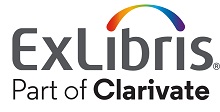Navigating Technology Change: Librarian Leaders Share Their Best Practices
Putting off adoption of new technologies puts libraries at risk of falling behind in serving their users effectively. For libraries tackling new initiatives, the ability to manage change is crucial. We spoke with several library leaders to learn how they reduce organizational stress and navigate change at both the organizational and individual levels.


Putting off adoption of new technologies puts libraries at risk of falling behind in serving their users effectively. For libraries tackling new initiatives, the ability to manage change is crucial. We spoke with several library leaders to learn how they reduce organizational stress and navigate change at both the organizational and individual levels.
Putting off adoption of new technologies puts libraries at risk of falling behind in serving users effectively. "Society’s pace of change is very high,” declares Jan Waterhouse, Associate Dean for Collections, Discovery, and Information Technology Services at Kansas State University in the U.S. “Academic libraries can’t afford to move slowly just because we want to be cautious. We won’t keep up fast enough for our patrons."
For libraries tackling new initiatives such as adapting to digital collections, unifying library management systems, integrating academic AI responsibly, or employing new communication tools, the ability to manage change is crucial. We spoke with Waterhouse and several other library leaders to learn how they reduce organizational stress and navigate change at both the organizational and individual levels.
The difference between transformational and incremental change
Understanding the difference between transformational and incremental change is key, because there are separate strategies for guiding organizations through them.
Transformational change is complex and multi-faceted, and often involves rethinking and reorganizing existing structures and processes. It disrupts the status quo, requires library staff to learn new workflows and acquire new skills, and stresses the organization. Gijs Noels is Product Manager at LIBISnet @ KU Leuven in Belgium, a service provider offering systems and services that allow libraries to work more efficiently and effectively. “Transformational change is usually announced as a ‘game changer,’” he summarizes.
Incremental change, by contrast, involves small adjustments that might seem minor, but have a significant impact over time. Incremental change also stresses the organization, particularly when a library implements many changes simultaneously. Sandra Morden, Head of Digital Initiatives & Open Scholarship at Queen's University in Canada, points out the growing array of communication platforms — apps, numerous social media channels, and websites — that libraries must now utilize. Taken together, they represent a major shift that requires adaptation and learning by library staff.

Guiding staff through transformational change
Here are some tips these leaders share to help libraries navigate transformational change.
Start with the vision. Your organization and your team members are being called on to change the way they do things. Tell them why it’s worth it. Focus on how the change will improve the ability of the library to deliver on its mission.
Define project governance. According to Waterhouse, a defining trait of transformational change is that it can’t be mapped from beginning to end. “With transformational change, you’re discovering as you go,” she states. Transformational change is a fluid process that cascades through a series of smaller steps and their effects.
Build in effective governance and project management practices from the get-go. The fluid nature of transformational change makes solid processes imperative. Morden also suggests making them accessible, motivating, and empowering. Create a project team and develop FAQs that answer the many questions that will arise. Sharing knowledge about how the process is being managed can significantly improve the readiness and ability of impacted teams to adapt.
Focus on adoption, not implementation. Successful change management involves guiding teams through the transition and building trust along the way. Over Waterhouse’s years in helping organizations and people adjust to change, she has learned that setting a goal of simply implementing the change or adopting a new technology works against an organization. “Change and the diffusion of innovation are inherently social processes,” she explains. “You’re much better off taking your time and helping people adjust to the change, because there’s another change coming. If you saturate them with change, you’re going to stress everyone out and your next change is going to be harder.”
Accept that mistakes will happen. As organizations go, libraries have a low tolerance for risk and team members are focused on accuracy and perfection. It’s important to communicate that making mistakes is part of the process and helps the organization learn.
Guarding against the overload of incremental change
Be wary of the cumulative effect of incremental change. Especially as libraries embrace emerging technologies such as AI, taking a structured approach will build the capacity to incorporate them.
Prioritize changes. Be aware of the number of changes team members are absorbing. Are they overwhelmed? Simplify by prioritizing changes that will make the greatest impact on workflow or user experiences.
Offload the impact of continual technology changes. Newer technologies are most often delivered via a SaaS model with the vendor handling software maintenance and updates. This can free some of the administrative burden but be sure to review the impact new technology will have on your IT staff.
Leverage community. Virtually all libraries are facing the same challenges. Encourage team members to engage in communities of peers to share learning and challenges. Listservs are valuable information resources that build communities around library products and services.
Putting people first, technology second
One of the most common consequences of change is stress and a decline in well-being as librarians struggle to keep up with the rapid pace of technological advancements. These library leaders emphasize the importance of a people-centered approach.
Take the long view. Waterhouse and Noels recommend a gradual approach that focuses on the people and their interaction with technology. "It’s not about the software as such. It’s about the adoption,” shares Noels. “We don’t say you need to do this in three months and then you start working in the system. It’s about trust and guiding them and helping them to adapt when it’s live."
Make communication a priority. Consistent communication about what’s happening in the organization gives team members a sense of control. Take a balanced approach to how much you share. Provide pertinent information when it is relevant to ensure teams have what they need to succeed. Avoid overwhelming them with information that’s not necessary.
Consider the individual. People resist change in diverse ways and for varied reasons, and understanding their resistance is key to overcoming it. “People aren’t going to tell you directly that ‘I don’t want to make this change because I’m good at my job and now I’m going to make mistakes and I’m scared,’” relates Waterhouse. “ They’re going to say, ‘But you don’t have this button that I always click at the end of my workflow.’ You have to be able to translate their resistance so that you can come up with an attractive strategy to get them on board.” She tells the story of a team member who was highly resistant. Rather than talking about how the change would benefit the team member, she spoke about the positive impact on the user experience. That completely dissipated the resistance, and the team member embraced the change.
Build momentum among staff. Morden suggests finding champions among staff — those who are excited about the change and see its possibilities. Rather than a top-down approach, build a “meta-team” of empowered and motivated staff to help lead the change throughout the organization.
Focusing on the positive: not change, but continuous improvement
“Change” can be a trigger word in a risk-averse environment. Instead, make “continuous improvement” your library’s mantra for delivering efficient, modern service to users. Creating a culture of continuous improvement makes adapting to change essential to the mission.
Encourage collaboration and idea sharing. Create an environment where team members feel comfortable sharing ideas and feedback. Make identifying areas for improvements and innovations a regular part of team meetings. Consider scheduling routine brainstorming sessions devoted solely to process improvement. Cross-departmental and diverse teams can spark more creative ideas.
Invest in professional development. Champion ongoing training and development opportunities for library staff and recognize and reward continuous learning. Take advantage of any training or programs offered by your library software suppliers.
Measure improvements. Use any metrics and data supplied by your library systems to learn where you are successful and identify opportunities for improvement. Set benchmarks, then regularly review, analyze, and share the results with staff to make improvements a team effort.
The importance of keeping up with technology and change
As the hearts of research, teaching and learning on their campuses, libraries must continue to evolve. A stagnant library will soon become irrelevant to its users. The tips and best practices these library leaders have learned through experience can help libraries stay on the leading edge of technology adoption and remain competitive and valuable in the academic landscape.
The core of the Ex Libris Library Open Platform, Ex Libris Alma is more than a library resource management system: it is the fuel for your library’s continual evolution. Alma delivers tangible value across key areas of institutional success — enhanced student experiences, digital learning, educational cost-reduction, research quality and effective teaching. It is designed to scale and progress with changing technology, formats, and workflows, empowering you to prioritize and advance incrementally. Learn more about Alma or request a demo.
SPONSORED BY
RELATED
ALREADY A SUBSCRIBER? LOG IN
We are currently offering this content for free. Sign up now to activate your personal profile, where you can save articles for future viewing










Add Comment :-
Comment Policy:
Comment should not be empty !!!